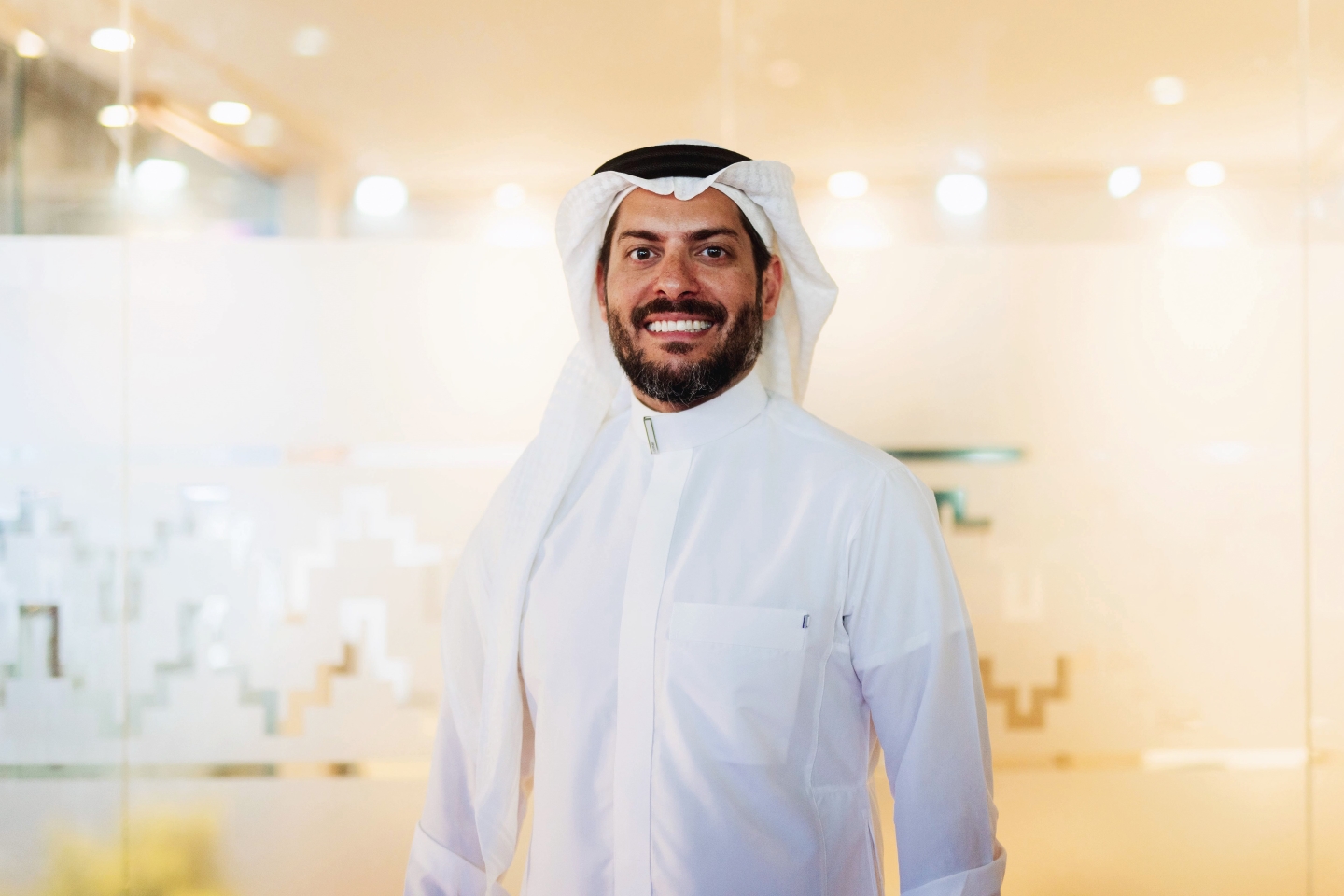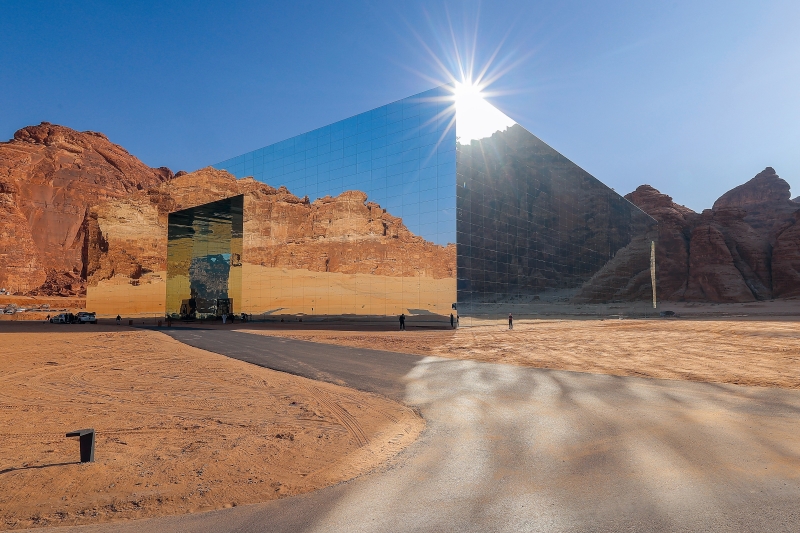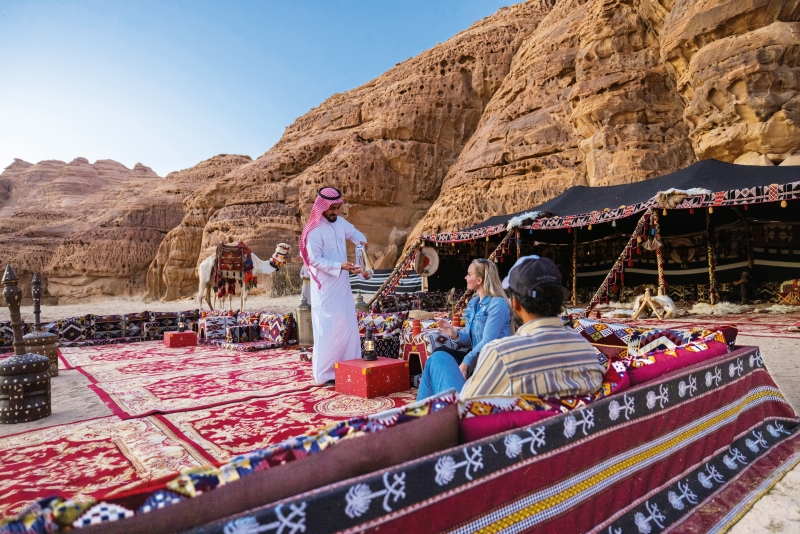
The president for Asia-Pacific markets recommends top hotels to bed down for the luxury traveller (Photo: Saudi Tourism Authority)
Options: It is a common misconception that Saudi Arabia welcomes only Muslim travellers. What are your thoughts on that?
Alhasan Aldabbagh: Saudi warmly welcomes all Malaysian travellers. Beyond just spiritual journeys, there is also a diverse range of offerings, from cultural escapes [to] thrilling adventures or even a transformative experience. You will find Saudi to be safe, accessible and enriching, regardless of gender or religion.
What would you recommend the first-time visitor see, do and experience?
We are home to eight Unesco World Heritage Sites. Perhaps start with Jeddah, the cultural heart of Saudi, which offers a captivating blend of the old and new. Wander through Al Balad, stroll along the lively corniche and visit bustling souks such as Al Alawi and Souk Al Baghdadiyah. Then immerse yourself in more than 1,400 years of history at Al Shafi’i Mosque, Jeddah’s oldest mosque.
For a contemporary experience, explore the groundbreaking TeamLab Borderless Museum, the first of its kind in the Middle East, and enjoy its world-famous interactive and ever-changing digital art installations. Just a 3½-hour drive away, AlUla blends history and adventure with more than 200,000 years of heritage. Discover stunning natural wonders such as Elephant Rock, desert safaris and unforgettable nights in tented desert camps.
394177057.jpg

AlUla sounds particularly interesting.
It is! AlUla is home to two of TIME magazine’s World’s Greatest Places; the Dar Tantora, The House Hotel, an eco-hotel made of carefully restored ancient but now luxurious mudbrick dwellings, and the breathtaking Shaaran Nature Reserve. You must also see Maraya, the world’s largest mirrored building in the Ashar Valley that is both an architectural wonder and a work of art.
Would the luxury traveller have enough indulgences?
Several new top hotels have opened their doors in recent years, including The Ritz-Carlton, Jeddah, which overlooks the Al Hamra Corniche and King Fahd’s Fountain. There are the Six Senses Southern Dunes, a 76-key inland desert resort, which pays homage to the Nabataean heritage of its majestic desert surroundings; and The St Regis Red Sea, a luxury resort on its own private island. Nujuma, a Ritz-Carlton Reserve, is open for bookings. The private island retreat sits within the captivating Blue Hole cluster of islands while the Bab Samhan Hotel, set to open soon, will prove a significant addition to the Diriyah district.
There is also Sindalah, a luxury island destination in the Red Sea, which has three luxury hotels, a beach club, yacht club, sports club, golf course and over 50 luxury retail outlets! And, of course, the world-renowned Habitas AlUla, a luxurious, sustainable retreat in the World Heritage Site of AlUla itself. AlUla also hosts its own annual Wellness Festival.
How easy is it for Malaysian travellers to visit Saudi?
It is now easier than ever before. Malaysia is one of the 66 countries eligible for the e-visa programme while umrah visas, available in Malay through the Nusuk app, have been extended to 90 days, allowing holders to leisurely explore the country after. Our first-ever, free 96-hour stopover visa was launched early last year with Saudia, our national carrier. From a connectivity perspective, four carriers (Saudia, AirAsia, Malaysia Airlines and Batik Air) fly to Jeddah, Riyadh, Dammam and Madinah. Amal by Malaysia Airlines also launched a new route from Johor Bahru to Madinah in July — the first direct flight to Saudi outside of its home base at KLIA.
diriyah_the_birthplace_of_the_first_saudi_state_and_a_unesco_heritage_site.jpg

What about retail therapy? What can travellers look to buy and bring home?
Exploring the vibrant souks of Saudi is a journey through time and tradition. Some of the most celebrated include Jeddah’s Souk Al Alawi, the largest in Saudi, or historic and atmospheric Souk Qabik. In Riyadh, Souk Al Zal is known for its antiques, rare coins and old utensils while Diah Souk is a haven for art and heritage enthusiasts. Souk Al Tumor is the most famous date market in Saudi; and in Al Hofuf, Qaisariah Souk is three centuries old and famous for traditional handicrafts. Those seeking a more modern shopping experience can explore Red Sea Mall, one of Jeddah’s largest, conveniently located near the Waterfront Promenade along the corniche.
Food is an important aspect of travel for many Malaysians. What would you recommend people try?
The Al-Saidi Furn bakery, a 200-year-old culinary gem, offers authentic flavours. Try dishes such as Kabsa, a fragrant rice and meat dish, and Mandi, renowned for its distinctive preparation. Or go to Bujairi Terrace, a luxurious dining destination in Diriyah, Riyadh, which offers a wide range of international and local cuisines in a beautiful setting overlooking the At-Turaif World Heritage Site.
tourists_enjoying_a_traditional_bedouin_picnic.jpg

Is there a preferred time to visit Saudi Arabia? I am guessing summer is out of the question.
Saudi is a year-round destination and there are cooler destinations to explore during summer, too. If you like diving, the Red Sea is full of underwater caves formed thousands of years ago. One of the easiest places to go cave diving is along the coast of Jeddah. The unique and scenic Fly Red Sea seaplane service is also fun.
It is nice to experience breathtaking nature in Aseer, a cool region that is home to Al Soudah, our highest peak at 3,000m, or hike through Abha’s juniper forests. Taif is renowned for its rose gardens and there is the Taif Rose Factory, too. You could also go strawberry-picking or soak up some history at the Al-Shareef Museum. There is plenty to see and do, whichever time you choose to visit.
This article first appeared on Sept 2, 2024 in The Edge Malaysia.


